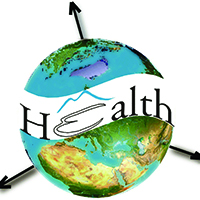Demographic and socioeconomic determinants of COVID-19 across Oman - A geospatial modelling approach

All claims expressed in this article are solely those of the authors and do not necessarily represent those of their affiliated organizations, or those of the publisher, the editors and the reviewers. Any product that may be evaluated in this article or claim that may be made by its manufacturer is not guaranteed or endorsed by the publisher.
Authors
Local, bivariate relationships between coronavirus 2019 (COVID-19) infection rates and a set of demographic and socioeconomic variables were explored at the district level in Oman. To limit multicollinearity a principal component analysis was conducted, the results of which showed that three components together could explain 65% of the total variance that were therefore subjected to further study. Comparison of a generalized linear model (GLM) and geographically weighted regression (GWR) indicated an improvement in model performance using GWR (goodness of fit=93%) compared to GLM (goodness of fit=86%). The local coefficient of determination (R2) showed a significant influence of specific demographic and socioeconomic factors on COVID-19, including percentages of Omani and non-Omani population at various age levels; spatial interaction; population density; number of hospital beds; total number of households; purchasing power; and purchasing power per km2. No direct correlation between COVID- 19 rates and health facilities distribution or tobacco usage. This study suggests that Poisson regression using GWR and GLM can address unobserved spatial non-stationary relationships. Findings of this study can promote current understanding of the demographic and socioeconomic variables impacting the spatial patterns of COVID-19 in Oman, allowing local and national authorities to adopt more appropriate strategies to cope with this pandemic in the future and also to allocate more effective prevention resources.
How to Cite
PAGEPress has chosen to apply the Creative Commons Attribution NonCommercial 4.0 International License (CC BY-NC 4.0) to all manuscripts to be published.













